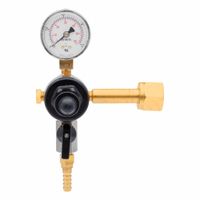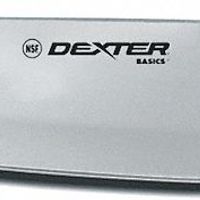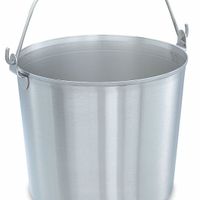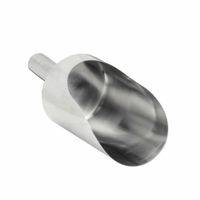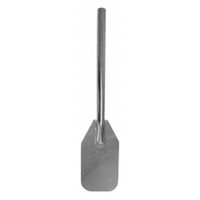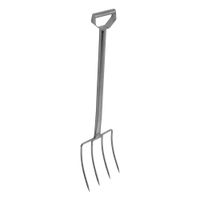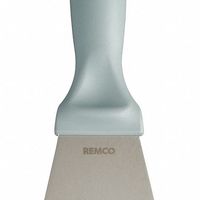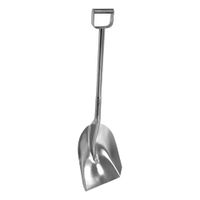Call +(254) 703 030 000 / 751 483 999 / 721 704 777
- Home
- Furnishings Appliances Hospitality
- Food Beverage Processing Supplies
Frequently Asked Questions
What are the FDA and NSF requirements for hygienic tools in food processing?
The FDA (Food and Drug Administration) and NSF (National Sanitation Foundation) establish critical guidelines for hygienic tools in food processing to ensure food safety and prevent contamination.
The FDA's regulations, primarily found in the Code of Federal Regulations (CFR) Title 21, emphasize that food-contact surfaces and tools must be made of materials that are non-toxic, corrosion-resistant, and capable of withstanding repeated cleaning and sanitizing. They should be smooth, easily cleanable, and free of crevices where bacteria can harbor. Tools must not impart undesirable odors, tastes, or substances to food. The FDA also requires that equipment be designed and constructed to prevent cross-contamination and facilitate proper drainage.
NSF International develops public health standards and certification programs that go beyond basic regulatory compliance. NSF standards (e.g., NSF/ANSI 2-Food Equipment) provide detailed criteria for the design, materials, and construction of food processing equipment and tools. Key NSF requirements include: * **Material Suitability:** Materials must be food-grade, durable, and resistant to chemicals, corrosion, and wear.
* **Design for Cleanability:** Tools must have smooth, non-porous surfaces, rounded corners, and minimal seams to prevent microbial growth and allow for effective cleaning and sanitizing. Disassembly for cleaning should be easy.
* **Performance:** Tools must function effectively without creating hazards or facilitating contamination.
* **Testing and Certification:** Products undergo rigorous testing to ensure they meet the standards for hygiene and safety before receiving NSF certification.Adherence to both FDA regulations and NSF standards ensures that tools used in food processing minimize the risk of physical, chemical, and biological contamination, contributing to the overall safety and quality of food products.
How do hygienic shovels differ from regular shovels in food processing?
Hygienic shovels are specifically designed for use in food processing environments, where maintaining strict hygiene standards is paramount to prevent contamination and ensure food safety. They differ significantly from regular shovels in several key aspects.
Firstly, the materials used are distinct. Hygienic shovels are typically made from FDA-approved materials like stainless steel or high-density polyethylene (HDPE), which are non-porous, corrosion-resistant, and easy to clean and sanitize. Regular shovels, on the other hand, might be made from materials like carbon steel or wood, which can be porous, rust, and harbor bacteria, making them unsuitable for food contact.
Secondly, the design of hygienic shovels minimizes areas where food particles or bacteria can accumulate. They often feature smooth, seamless construction with no crevices, rivets, or sharp angles that could trap contaminants. Regular shovels often have numerous joints and rough surfaces.
Thirdly, the cleaning and sanitation processes for hygienic shovels are much more rigorous. They are designed to withstand frequent washing with high-pressure water, detergents, and sanitizing agents, and can often be autoclaved or run through industrial dishwashers. Regular shovels are not designed for such intensive cleaning, making them difficult to properly sanitize.
Finally, the intended use and regulatory compliance are critical differentiators. Hygienic shovels are manufactured to meet specific industry standards and regulations (e.g., HACCP, GMP) for food safety. Regular shovels are for general purpose use and do not adhere to these strict requirements, making them a significant cross-contamination risk in food processing.
What materials are commonly used for hygienic food processing tools?
Commonly used materials for hygienic food processing tools include stainless steel (grades 304 and 316 for corrosion resistance), food-grade plastics (like HDPE, PP, and PTFE for non-reactivity and easy cleaning), and silicone (for flexibility and high-temperature resistance). These materials are chosen for their durability, non-toxicity, resistance to corrosion and chemicals, and ease of cleaning and sanitization, which are crucial for preventing contamination in food processing environments.
How do you ensure hygienic tools are properly sanitized?
Ensuring hygienic tools are properly sanitized involves a multi-step process to eliminate microorganisms and prevent the spread of infection. This typically begins with cleaning, which removes visible debris and organic matter using detergents and water. This step is crucial because sanitization agents are less effective in the presence of dirt. After cleaning, rinsing thoroughly with clean water is necessary to remove any detergent residues.
The next step is sanitization itself, which reduces the number of microorganisms to a safe level. This can be achieved through various methods, depending on the tool and its intended use. Common methods include heat sanitization (e.g., hot water, steam) and chemical sanitization (e.g., using sanitizers like quaternary ammonium compounds, chlorine-based solutions, or alcohol). For heat sanitization, tools are exposed to specific temperatures for a set duration. For chemical sanitization, tools are immersed in or sprayed with a sanitizing solution at the correct concentration and contact time.
Following sanitization, tools should be air-dried or dried with a clean, dedicated towel to prevent recontamination. Proper storage is also vital; sanitized tools should be stored in a clean, dry, and covered environment to protect them from dust, dirt, and airborne contaminants until their next use. Regular monitoring and maintenance of sanitization equipment, along with staff training on proper procedures, are essential to consistently ensure effective tool hygiene.
What are the benefits of using hygienic scrapers in food processing?
Hygienic scrapers play a crucial role in maintaining food safety and operational efficiency within food processing environments. Their primary benefit lies in their ability to thoroughly remove product residue from equipment surfaces, preventing the buildup of bacteria and other contaminants that can lead to spoilage and cross-contamination. This meticulous cleaning capability significantly reduces the risk of foodborne illnesses, ensuring compliance with stringent food safety regulations like HACCP and GMP.
Beyond hygiene, these specialized scrapers contribute to operational benefits. By efficiently clearing sticky or viscous materials, they minimize product waste, leading to cost savings. Their design often incorporates smooth, non-porous materials that are easy to clean and sanitize, reducing the time and resources required for sanitation procedures. This increased cleaning efficiency allows for quicker changeovers between production runs, boosting overall productivity. Furthermore, the use of appropriate hygienic scrapers can extend the lifespan of processing equipment by preventing corrosive buildup and abrasive cleaning methods. Ultimately, the integration of hygienic scrapers is an investment in both consumer safety and a more efficient, profitable food processing operation.
How do hygienic mixing paddles improve food safety?
Hygienic mixing paddles significantly enhance food safety by minimizing contamination risks during food processing. Their design prioritizes smooth, non-porous surfaces, typically made from food-grade stainless steel or engineered plastics, which prevent bacterial harborage and simplify cleaning. Unlike traditional paddles that might have crevices or rough areas where food particles and microorganisms can accumulate, hygienic paddles are designed to be easily cleanable and sanitizable. This reduces the likelihood of cross-contamination between batches and prevents the growth of pathogens.
Furthermore, hygienic paddles often feature seamless construction, eliminating joints or welds that could trap contaminants. They may also incorporate features like sealed bearings and shaft designs that prevent lubricant leaks into the food product. The materials used are also resistant to corrosion and chemical reactions, ensuring they do not leach harmful substances into the food or degrade over time, which could create physical contaminants. By addressing these critical points of potential contamination, hygienic mixing paddles play a crucial role in maintaining product integrity and ensuring consumer safety.
What is the best way to maintain hygienic rakes and forks?
Maintaining hygienic rakes and forks, especially those used in gardening or agriculture, is crucial to prevent the spread of plant diseases and ensure the longevity of your tools. After each use, especially when working with diseased plants or in muddy conditions, it's important to remove any visible soil, debris, or plant matter. A stiff brush or a strong stream of water can be effective for this initial cleaning. For a more thorough cleaning, prepare a solution of warm, soapy water and scrub the tines and handles of the tools. Dish soap works well, but for tougher grime, a degreasing agent might be necessary.
After cleaning off physical residue, sanitization is the next vital step. A common and effective method is to use a bleach solution. Mix one part household bleach with nine parts water in a bucket or container large enough to submerge the tool heads. Allow the rakes and forks to soak for at least 10-15 minutes. Alternatively, rubbing alcohol can be used, applied with a cloth to wipe down the metal parts. For tools used in areas with known plant diseases, a stronger disinfectant specifically designed for horticultural tools may be preferred.
Once cleaned and sanitized, it's imperative to dry the tools completely to prevent rust. Air drying in a well-ventilated area is ideal, or you can wipe them down with a clean, dry cloth. Once dry, apply a light coat of oil, such as mineral oil or a general-purpose lubricating oil, to the metal parts. This not only further prevents rust but also helps keep the tools in good working condition. Store your clean, dry, and oiled tools in a dry place, away from extreme temperatures and humidity. Regularly sharpening rake tines and fork prongs also contributes to their overall hygiene and effectiveness, as clean, sharp tools are less likely to transfer pathogens and perform better, reducing effort and potential plant damage.
How do you choose the right food processing cutlery for specific tasks?
Choosing the right food processing cutlery for specific tasks is crucial for efficiency, safety, and optimal results. First, consider the food item you'll be processing. For example, a chef's knife is a versatile all-rounder, excellent for chopping, slicing, and dicing a variety of foods, while a serrated knife excels at cutting through items with tough exteriors and soft interiors, like bread or tomatoes.
Next, think about the specific task. If you're filleting fish, a flexible, thin filleting knife is essential for precision and minimal waste. For boning meat, a sturdy, sharp boning knife with a pointed tip allows for accurate separation of meat from bone. Paring knives are ideal for delicate tasks like peeling, trimming, and intricate garnishing.
The material of the blade is also important. High-carbon stainless steel offers a good balance of sharpness, durability, and corrosion resistance. Ceramic knives are incredibly sharp and hold an edge well, but they are more brittle and prone to chipping.
Finally, consider the handle design. An ergonomic, non-slip handle provides comfort and control, reducing fatigue and preventing accidents, especially during repetitive tasks. Proper balance between the blade and handle also contributes to a more controlled and precise cutting experience. Matching the cutlery to the task not only makes the job easier but also enhances the quality of your food preparation.
What are the advantages of using hygienic dairy pails in milk processing?
Using hygienic dairy pails in milk processing offers several key advantages. Firstly, they significantly reduce the risk of bacterial contamination. Traditional pails can harbor pathogens, leading to spoilage and potential health risks. Hygienic pails, often made from food-grade stainless steel or other non-porous materials, are easy to clean and sanitize, preventing microbial growth. This directly translates to a higher quality milk product with a longer shelf life.
Secondly, hygienic pails contribute to maintaining the nutritional integrity of the milk. Contamination can alter the taste, smell, and even the nutritional composition of milk. By minimizing contamination, these pails help preserve the natural freshness and beneficial components of the milk, ensuring consumers receive a product that is both safe and wholesome.
Thirdly, they improve operational efficiency and reduce waste. Fewer instances of spoiled milk mean less product needs to be discarded, leading to cost savings for dairy farmers and processors. The durability and ease of cleaning of hygienic pails also reduce labor time and the need for frequent replacements, further enhancing efficiency.
Finally, the use of hygienic dairy pails is crucial for compliance with food safety regulations. Governments and industry bodies worldwide impose strict standards on milk production to ensure consumer safety. Employing proper equipment like hygienic pails demonstrates a commitment to these standards, helping businesses avoid penalties and build consumer trust.
How do hygienic hand and bowl scoops enhance food handling efficiency?
Hygienic hand and bowl scoops significantly enhance food handling efficiency by promoting cleanliness, reducing cross-contamination, and improving the speed and accuracy of ingredient measurement. These tools are typically designed with smooth, non-porous surfaces that are easy to clean and sanitize, preventing the buildup of bacteria and other pathogens. By minimizing direct hand contact with food, they help maintain a sterile environment, which is crucial in preventing foodborne illnesses and adhering to food safety regulations.
Furthermore, standardized scoops allow for precise portion control, leading to consistent product quality and reduced waste. This accuracy in measurement streamlines recipes and batch preparation, saving time and labor. Their ergonomic designs often make them comfortable to use, reducing user fatigue during repetitive tasks. In high-volume settings, the ability to quickly and safely transfer ingredients without compromising hygiene is invaluable, contributing to a more efficient and compliant food handling operation.
